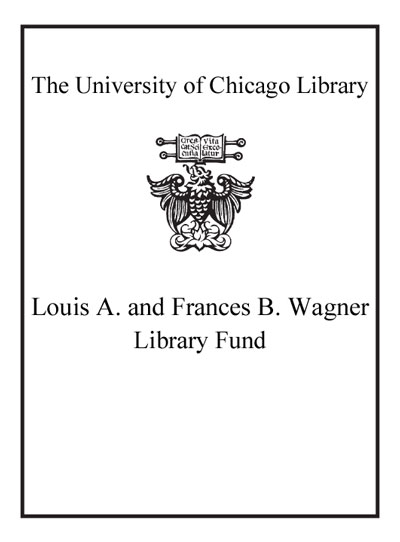Revisiting aspect and Aktionsart : a corpus approach to Koine Greek event typology /
Saved in:
| Author / Creator: | Pang, Francis G. H., author. |
|---|---|
| Imprint: | Leiden ; Boston : Brill, [2016] |
| Description: | x, 299 pages ; 25 cm. |
| Language: | English |
| Series: | Linguistic biblical studies, 1877-7554 ; volume 14 Linguistic biblical studies ; v. 14. |
| Subject: | |
| Format: | Print Book |
| URL for this record: | http://pi.lib.uchicago.edu/1001/cat/bib/10559349 |
Table of Contents:
- Acknowledgements
- List of Figures and Tables
- List of Abbreviations
- Introduction
- 1. Aspect, Aktionsart, and New Testament Greek Studies
- 1.1. Introduction
- 1.2. Definitions and Nomenclatural Issues
- 1.3. History of Development and General Theories
- 1.3.1. Ancient Greek Philosophers
- 1.3.2. Grammatical Aspect
- 1.3.2.1. The Totality Approach
- 1.3.2.2. The Internal Semantics Approach
- 1.3.2.3. Cross-Linguistic Discussion and Variations
- 1.3.3. Aktionsart and the Classification of Verbs
- 1.3.3.1. Aktionsart and Comparative Philology
- 1.3.3.2. Vendler's Taxonomy and Event Typology
- 1.3.4. Aspect, Aktionsart, and Compositionality
- 1.3.4.1. Unidimensional Approach
- 1.3.4.2. Tridimensional Approach
- 1.3.4.3. Compositionality
- 1.4. Aspect and Aktionsart in New Testament Greek
- 1.4.1. Traditional Greek Grammars
- 1.4.2. Aspect and New Testament Greek
- 1.4.3. Aspect and Aktionsart in New Testament Greek: Two Approaches
- 1.4.3.1. Non-Vendlerian Approaches
- 1.4.3.2. Vendlerian Approaches
- 1.4.4. Assumptions in the Present Study
- 1.5. Conclusion
- 2. Approaches to Event Typology
- 2.1. Introduction
- 2.2. Post-Vendlerian Developments in Event Typology
- 2.2.1. Alternative Construals and Class-Expansions
- 2.2.2. Lexical Semantic Features
- 2.2.3. Diagnostics and Linguistic Realizations
- 2.3. Event Typology and New Testament Greek
- 2.3.1. Fanning: A Traditional Vendlerian Approach
- 2.3.2. Olsen: A Privative Approach
- 2.3.3. A Critical Evaluation of Vendler's Taxonomy in NT Greek Studies
- 2.3.3.1. Transferability
- 2.3.3.2. Optimal Unit of Analysis
- 2.3.3.3. Overall Approach
- 2.4. Moving Forward: A Corpus Based Method
- 3. A Corpus Approach to Koine Greek Event Typology
- 3.1. Introduction: Numerical Methods and Biblical Studies
- 3.2. A Representative Corpus of Koine Greek
- 3.2.1. Corpus Linguistics and Koine Greek Studies
- 3.2.2. Classification Criteria and Representative Corpus
- 3.3. The Compositionality of Telicity
- 3.3.1. Telicity as an Ontological Category
- 3.3.2. Telicity and Linguistic Realizations
- 3.3.3. Telicity and Perfectivity: Dependent or Independent Systems?
- 3.4. Defining the Data: Activity and Accomplishment
- 3.4.1. Prefixed Verbs and Telicization
- 3.4.2. Classifications of Greek Verbs
- 3.5. Conclusion
- 4. Telicity and Perfectivity in Koine Greek
- 4.1. Introduction
- 4.2. Corpus Analysis
- 4.2.1. General Remarks and Baseline Measurement
- 4.2.2. Telle Verb, Telle Environment, and Perfective Form
- 4.2.2.1. Movement Verbs
- 4.2.2.2. Telicizing Prefixed Verbs
- 4.2.2.3. Other Accomplishment Verbs
- 4.2.3. Null Hypotheses Revisited
- 4.3. Conclusion
- 5. Towards an Interpretive Understanding of Aktionsart
- 5.1. Introduction
- 5.2. Telicity as an Interpretive Category
- 5.2.1. The Semantic and Pragmatic Model of Telicity
- 5.2.1.1. Semantics and Pragmatics
- 5.2.1.2. The Semantics-Pragmatics Distinction in Greek Studies
- 5.2.1.3. The Shortcomings of the Semantics-Pragmatics Distinction
- 5.2.2. Positioning Telicity in a Multi-Tier Model
- 5.3. Conclusion
- Appendix A. Proposed Representative Corpus of Hellenistic Greek
- Appendix B. Aspect/Mood Distributions and Statistical Analyses
- Bibliography
- Index

